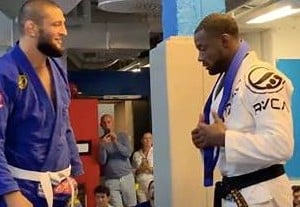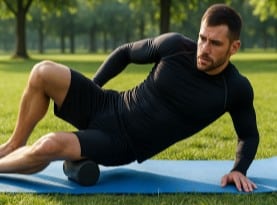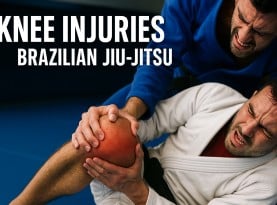BJJ Finger Injuries: Causes, Prevention, Taping, and Recovery
Brazilian Jiu-Jitsu (BJJ) is a sport of grips, control, and constant hand engagement — and that means your fingers often pay the price. From white belt to black belt, nearly every grappler has dealt with sore, swollen, or even damaged fingers at some point. While BJJ is generally a low-impact martial art compared to striking sports, its grip-heavy nature puts the small joints and tendons in your hands under significant strain.
In this guide, we cover why finger injuries are so common in BJJ, the most frequent types of finger damage, how to prevent them, whether it’s wise to tape your fingers, and the best recovery strategies. For additional reading, see our deep-dive on BJJ grip strength exercises and our buyer’s guide to the best BJJ finger tape.
Why Finger Injuries Happen So Often in BJJ
Finger injuries in BJJ are mainly caused by repetitive strain and sudden force applied to the small joints, ligaments, and tendons of the hands. The constant grabbing of collars, sleeves, and pant legs — especially in gi training — forces your fingers into awkward positions under load.
- Aggressive grip fighting: Breaking and re-establishing grips strains finger tendons.
- Gi friction: Thick cotton fabric twists fingers unnaturally during rolls.
- Submission defense: Pulling away from collar chokes or sleeve grips under tension can jam joints.
- Overtraining: Daily training without recovery weakens connective tissue.
No-gi players are not immune, but gi athletes are more prone to chronic finger issues because of constant fabric gripping.
Most Common Finger Injuries in BJJ
| Injury | What It Is | Typical Cause |
|---|---|---|
| Sprained finger joints (PIP) | Ligament stretch or micro-tears around the middle joint. | Hyperextension, twisting, sudden force. |
| Tendonitis (flexor strain) | Inflamed tendons from overuse of gripping muscles. | Repetitive gripping, long gi sessions. |
| Capsulitis | Inflamed joint capsule causing stiffness and swelling. | Repeated bending under load. |
| Pulley injuries (A2) | Strain or rupture of the pulley that holds the tendon to the bone. | Max-effort gripping; rare but possible. |
| Dislocations & fractures | Joint displacement or bone break. | Forceful grip breaks, awkward falls. |
How to Prevent Finger Injuries in BJJ
Technique & Training Choices
- Vary your grips: Mix collar grips with pistol and pocket grips to spread stress.
- Let go early: Avoid “death grips” that twist fingers.
- Balance gi and no-gi: Give your hands regular breaks from cloth gripping.
Preparation & Strength
- Warm up fingers: Light mobility work before class.
- Strengthen hand & forearm: Rice bucket drills, towel pull-ups, extensors.
- Load management: Cap hard rounds and rotate grip-heavy days.
Should You Tape Your Fingers?
Finger taping is common in BJJ, but it’s not a magic bullet.
- Pros: Extra support for ligaments/tendons, reduced pain, reminder to avoid overuse.
- Cons: False sense of security, doesn’t heal tissue, tight wraps can restrict blood flow.
Best practice: Use tape to support irritated joints while you adjust training volume. Pair with recovery work — don’t rely on tape alone.
How to Recover From a Finger Injury
- Rest & reduce load: Avoid heavy gi grip work for 1–2 weeks or switch to no-gi.
- Ice & elevate: 10–15 minutes several times daily for 48 hours after acute injuries.
- Buddy taping: Stabilize by taping the injured finger to a neighbor during light training.
- Mobility: Gentle ROM once pain settles to prevent stiffness.
- Strength rebuild: Gradually reintroduce grip work before full training.
- See a professional: Severe swelling, deformity, or limited motion warrants imaging/physio.
Final Thoughts
Finger injuries are common in BJJ, but they don’t have to be career-limiting. By understanding why they happen, using prevention strategies, and recovering the right way, you can keep your hands healthy and your grips strong for years to come.




